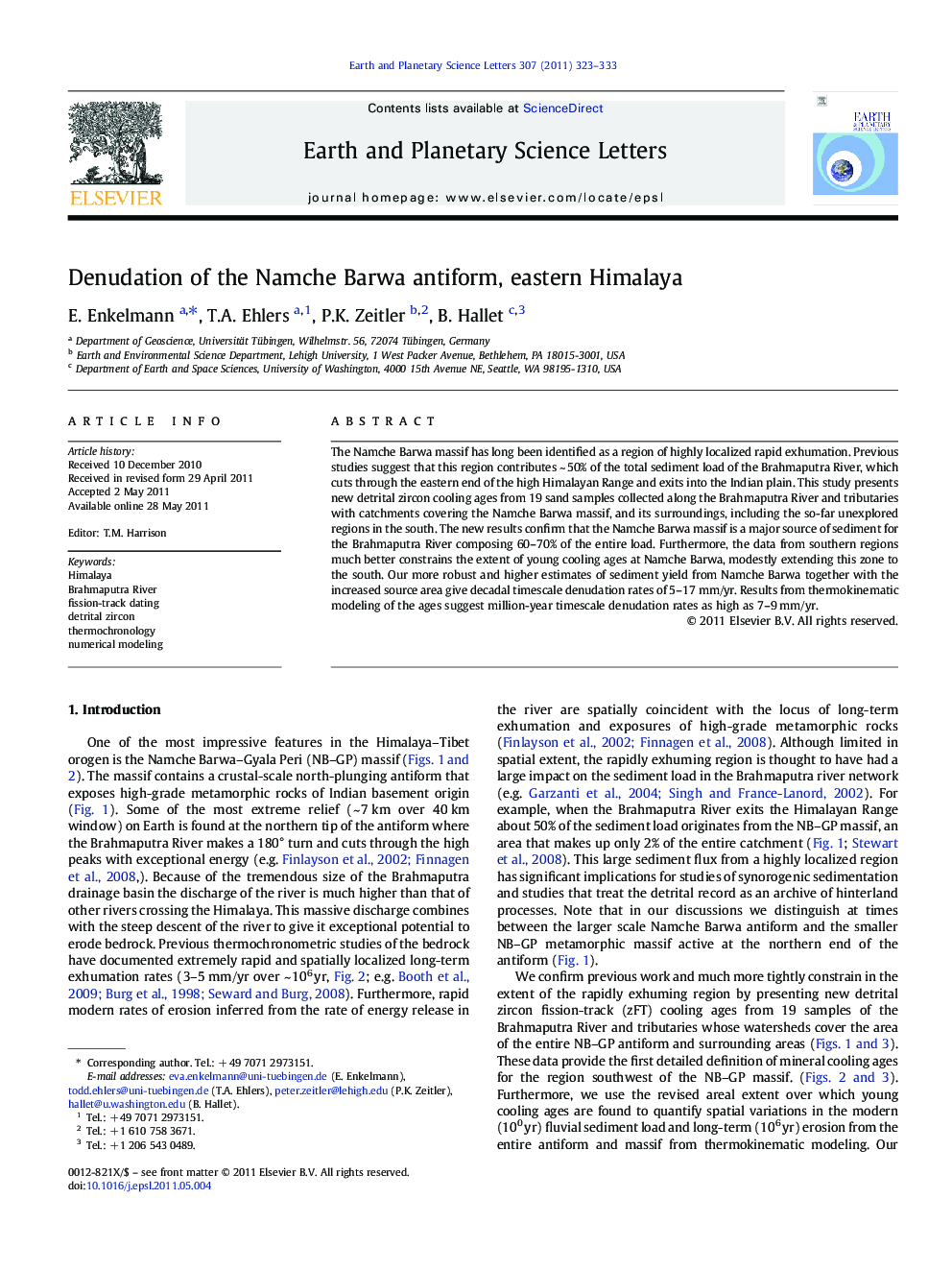| Article ID | Journal | Published Year | Pages | File Type |
|---|---|---|---|---|
| 4677902 | Earth and Planetary Science Letters | 2011 | 11 Pages |
The Namche Barwa massif has long been identified as a region of highly localized rapid exhumation. Previous studies suggest that this region contributes ~ 50% of the total sediment load of the Brahmaputra River, which cuts through the eastern end of the high Himalayan Range and exits into the Indian plain. This study presents new detrital zircon cooling ages from 19 sand samples collected along the Brahmaputra River and tributaries with catchments covering the Namche Barwa massif, and its surroundings, including the so-far unexplored regions in the south. The new results confirm that the Namche Barwa massif is a major source of sediment for the Brahmaputra River composing 60–70% of the entire load. Furthermore, the data from southern regions much better constrains the extent of young cooling ages at Namche Barwa, modestly extending this zone to the south. Our more robust and higher estimates of sediment yield from Namche Barwa together with the increased source area give decadal timescale denudation rates of 5–17 mm/yr. Results from thermokinematic modeling of the ages suggest million-year timescale denudation rates as high as 7–9 mm/yr.
Research highlights► The rapid exhuming Namche Barwa massif composes 60–70% of the Brahmaputra sediments. ► Detrital zircon FT ages reveal long-term exhumation rates of 8 mm/yr at NB massif. ► Rapid exhumation in the NB massif extends 50 km SW than previously recognized.
